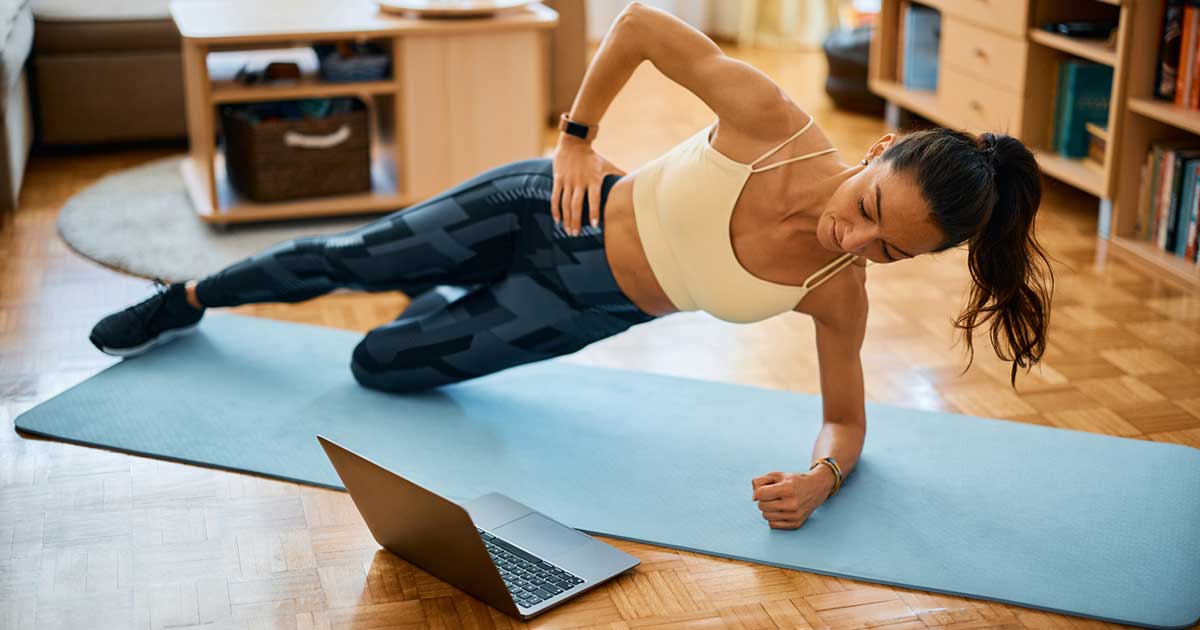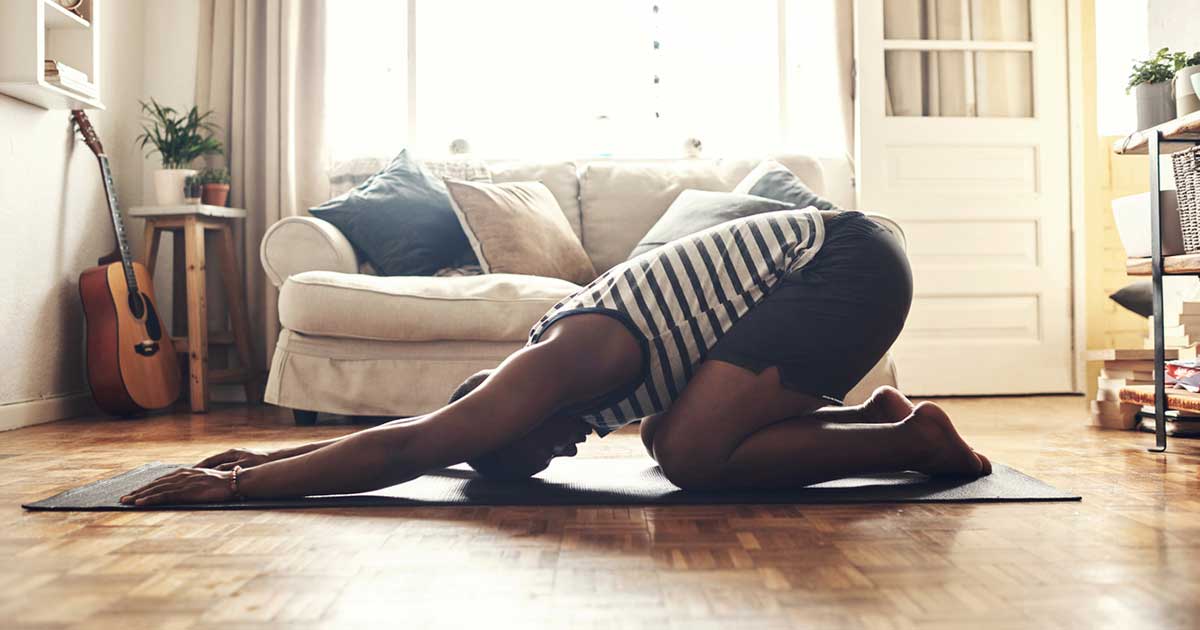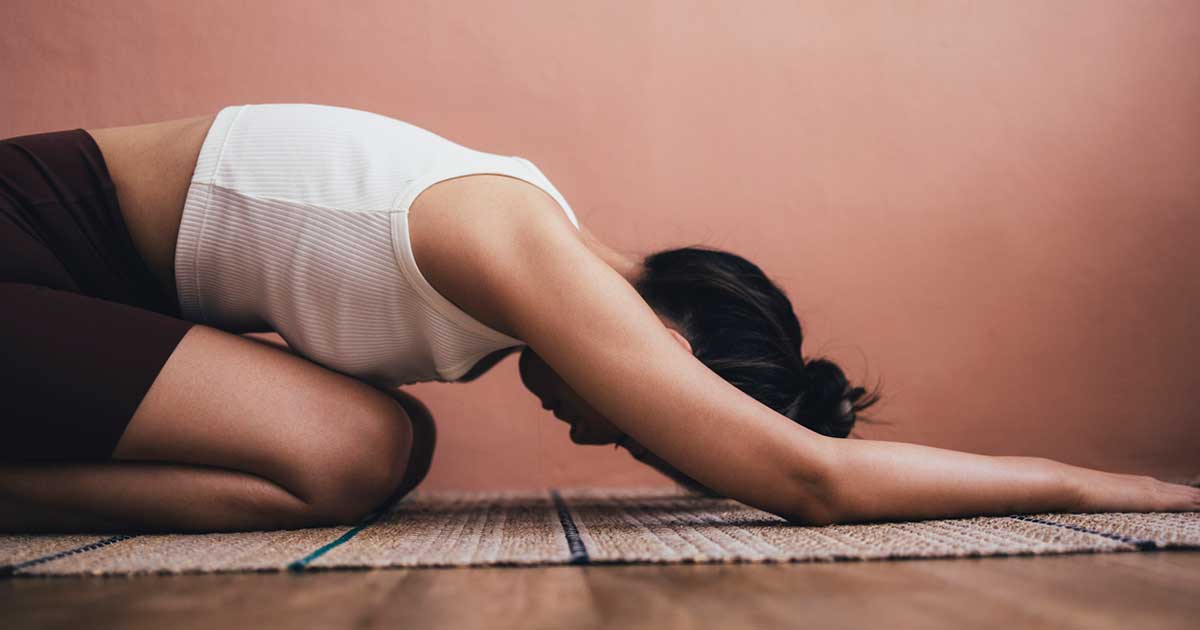
Advice to improve your movement, fitness, and overall health from the #1 in orthopedics in the U.S.
Stretches and Exercises to Ease Sciatica Pain, from a PT
Sciatica is nothing new: Some say that Hippocrates was the first doctor to name this unique condition that causes pain in the back of the leg. (Sciatica comes from the Greek word ischios, for hip.)
Advice to improve your movement, fitness, and overall health from the #1 in orthopedics in the U.S.
But sciatica may be new to you. The term is broadly used to describe pain that involves the sciatic nerve, which runs down the back of the leg. People describe sciatica as a dull, aching, shooting or even burning pain. You may also have numbness, tingling, muscle weakness or altered reflexes in the affected leg. In mild cases, the pain may only travel down to the thigh, while in severe cases, it’s felt all the way down to the foot.

There are two main types of sciatica: mechanical, where something like a bone spur or herniated disc is pushing on the nerve, and inflammatory, where swelling due to injury, pregnancy, infection or another condition is applying the pressure.
If you’ve had symptoms for more than a week or two, it’s a good idea to have a doctor check you out ASAP, says Brian Jones, PT, DPT, OCS, CSCS, a physical therapist at HSS Rehabilitation and Performance in Brooklyn. “Whether this is your first time dealing with sciatica or you’ve had it before, in all likelihood it won’t be the last time it shows up,” he says. “So it’s very, very valuable to arm yourself with knowledge and know how to treat it.”
6 Moves to Ease Sciatica
Treating and preventing mild sciatica look very similar. “Try your best to keep moving and stay healthy. Make sure your body can handle what you’re putting it through on a daily basis,” Jones says. “If you have a high-intensity job, that means having enough strength and range of motion in your hips and knees to do your work without injury.” For others, that may mean building the strength, balance, flexibility and aerobic capacity to run around with your kids or grandkids, do heavy yardwork or take an active vacation.
Keeping up an active routine can actually help ease sciatica if it does return, Jones says, as can doing some gentle movements that target the affected area. You can do the six moves below right on your floor at home.
First, some gentle reminders
- Do each 8 to 10 times (per exercise and/or per side of the body).
- It’s most helpful if you do them at least twice a week, but you can do them every day, if it feels good.
- Don’t hold your breath! Focus on breathing deeply, filling your lungs, as you perform each move. If you’re not sure how to breathe deeply, get into the Glute Bridge pose and place your hands over your belly, and focus on trying to breathe in such a way that your hands rise and fall.
- Remember that these exercises (or whatever movements you do) shouldn’t cause you more pain, notes Jones. If they do, stop right away.
Glute Bridge
- Lie on your back with your knees bent and feet flat on the floor, hip-width apart. Allow your arms to rest straight at your sides, palms down.
- Tighten your core, drawing in your belly button toward your spine.
- Press your arms into the floor for support and push through your heels, raising your hips toward the ceiling and squeezing your glutes. The goal is for your body to form a straight line from head to knees, with very little arch in the lower back.
- Hold 5 to 30 seconds. Lower slowly. That’s one rep.
Lying Knee-to-Chest Stretch
- Lie on your back with your legs extended. Try not to arch your back.
- Slowly bring one knee toward your chest and grasp it with your hands (behind or on top of the knee).
- Pull on the knee gently until you feel a mild stretch in your lower spine and hip.
- Hold 5 to 30 seconds. Lower slowly. That’s one rep.
Clamshell
- Lie on your side with both knees bent. Tuck your bottom arm under your head to support it.
- Engage your core, drawing in your belly button toward your spine.
- Keeping your feet together, slowly raise your top knee, opening your legs like a clamshell opens. Use your top arm to help steady yourself so you don’t roll toward your back.
- Hold 5 to 30 seconds. Lower slowly. That’s one rep.
Bird-Dog
- Start on all fours. Be sure your hands are directly below your shoulders and your knees are directly below your hips.
- Engage your core, drawing in your belly button toward your spine. Gaze forward and slightly down (about a foot in front of your hands) to avoid putting stress on your neck.
- Lift your left arm straight in front of you and extend your right leg straight behind you. (You can do this at the same time or one and then the other.) Be sure they are in a straight line with your back. (Doing this next to a mirror can make it easier to check your form.)
- Pause, then lower your hand and leg. Check that your back is still straight, not sagging or hunched. Readjust your gaze if your neck is bothering you.
- Repeat with the other leg and arm. That’s one rep.
Cobra Stretch
- Lie on your stomach with your hands under your shoulders and elbows tucked close to your body.
- Inhale as you press into your palms, slowly extending your arms as you lift your head, chest and shoulders. Keep your elbows slightly bent and your chin lifted at all times.
- Tighten the muscles in your core (abs and back) and your thighs.
- Hold 30 seconds. Lower slowly. That’s one rep.
Child’s Pose Stretch
- Start on all fours, as with the Bird-Dog.
- Bring your knees together as you sink backward, bringing your hips toward your heels. Allow your arms to extend so they are outstretched or place them alongside your body in a comfortable position. Allow your forehead to rest on the ground.
- Sink deeper into the stretch, allowing your upper body to relax fully and shifting your weight into your butt and thighs. Don’t worry if your butt does not touch your heels.
- Pause, breathing deeply. Imagine the tension leaving your body, especially in the backs of your buttocks.
- Hold for 5 minutes or as long as you like. There’s no need to repeat this move, but you can if it feels good to you.
When to See a Doctor for Sciatica
Jones notes that certain sciatica-like symptoms warrant a trip to urgent care. These include fevers, chills and night sweats, which can signal infection. Even more dangerous are severe pain, numbness or weakness in the area, and/or changes in bladder or bowel function. These may be signs of a rare condition called cauda equina syndrome, which can result in permanent damage if not treated right away.
Mild sciatica, on the other hand, may go away on its own, often with the help of rest, cold packs or heating pads and anti-inflammatory medicines. Even so, Jones says it’s a good idea to get it checked out. “As is often the case with health issues, the sooner you treat sciatica, the more likely you are to have a good outcome,” he says. You may also be able to prevent it from becoming an ongoing issue—or at least learn how to nip it in the bud if it happens again.
Jones suggests starting with a physical therapist, who can assess your symptoms and offer strategies and exercises to ease the pain. If physical therapy doesn’t do the trick or you need another type of care, your PT can give you a referral to a sciatica specialist.
Published 9/28/2022


